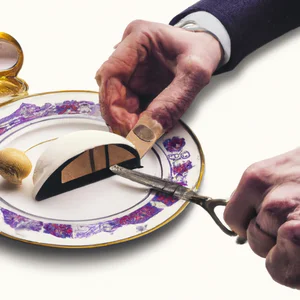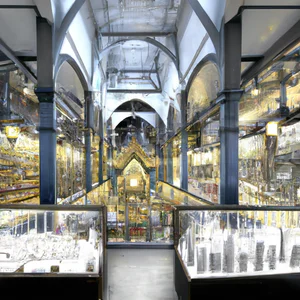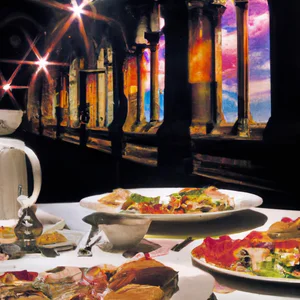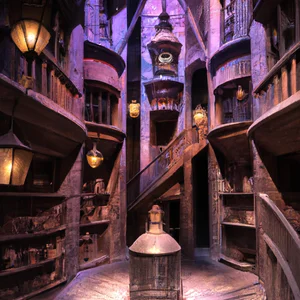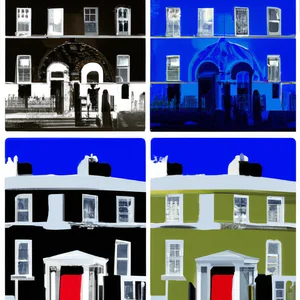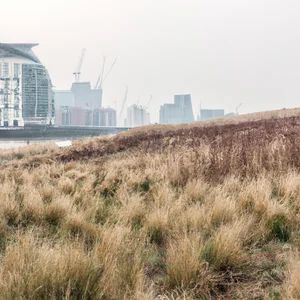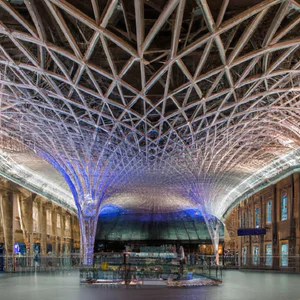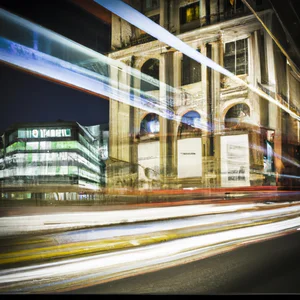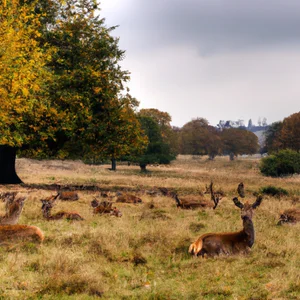Book your experience
Serpentine Pavilion: Temporary architecture and innovation in Kensington Gardens
Oh, let’s talk about the Serpentine Pavilion! Overall, it’s a really interesting place, located in Kensington Gardens. It’s one of those things that, if you’re in the area, you just can’t miss. Every year, a different architect is chosen to design this temporary pavilion, and trust me, it’s a surprise every time.
I remember once, while walking in the park, I stumbled upon a structure that looked like a cross between a work of art and a house of cards. It was so bizarre and fascinating that I couldn’t help but take a few photos. Yes, I know, a little cliché, but who could resist?
The cool thing is that it’s not just a nice place to look at. These pavilions, in a certain sense, are like an open-air laboratory for architecture. You experiment a lot, and not everything works out great, but that’s the beauty of it! I think the idea of making architecture accessible and innovative, even if only for a short time, is brilliant.
Of course, I can’t say I’m an architecture expert, but for me, these projects have a soul. They make you feel like you’re part of something bigger, and, you know, sometimes I wonder if all this innovation could really change the way we live. Maybe yes, maybe no, but at least it makes us think.
In any case, if you are in London, stop by the Serpentine Pavilion! Maybe bring a friend with you and get inspired. Who knows, you might go home with some brilliant ideas for your next project or, at least, with some great photos to share on social media!
Discover the Serpentine Pavilion: a temporary masterpiece
A personal experience
I still remember my first visit to the Serpentine Pavilion, a sunny afternoon that seemed to dance among the reflections of the lake water. My attention was immediately captured by this bold yet delicate structure, a work of art that emerged harmoniously from the lush greenery of Kensington Gardens. As I approached, the feeling of being in front of a temporary masterpiece became more and more intense. The atmosphere was vibrant: families, budding artists, and architecture lovers mixed together, creating a human mosaic that celebrated creativity and innovation.
Practical information
The Serpentine Pavilion, inaugurated every summer, is a project that invites world-renowned architects to create temporary works that challenge convention. Since 2000, this event has seen the participation of names such as Zaha Hadid, Bjarke Ingels and Frida Escobedo. This year, the pavilion’s innovative design was created by Sofia von Ellrichshausen, whose vision aims to create spaces that encourage sociality and interaction. To visit the pavilion it is advisable to check the opening hours on the official website Serpentine Gallery and plan a visit during weekdays to avoid the crowds.
Unconventional advice
A trick that only locals know is to bring a book with you and find a quiet corner around the pavilion to enjoy a moment of relaxation. There’s nothing more fascinating than reading among the innovative sculptures and designs, letting art and literature meet in the heart of London.
Cultural impact
The Serpentine Pavilion is not just a tourist attraction, but represents a cultural landmark that stimulates dialogue on contemporary architecture. Each year, the pavilion becomes a fertile ground for events, workshops and discussions, encouraging lively interaction between artists, architects and visitors. Its existence has transformed Kensington Gardens into an epicenter of innovation and creativity, attracting an increasingly diverse audience.
Sustainability in architecture
In an age where sustainability takes center stage, the Serpentine Pavilion is committed to using responsible materials and eco-friendly construction techniques. Each selected architect is invited to reflect on how their project can contribute to a more sustainable future by integrating practices that reduce environmental impact.
An immersive atmosphere
Visiting it is an experience that goes beyond simply admiring the architecture; it’s feeling part of an ever-evolving work of art. The elegant curves and bold shapes of the pavilion are reflected in the surrounding greenery, creating a visual dialogue that captures the imagination. Sitting on a wooden bench, while the sun slowly sets, is a moment that remains etched in the memory.
An activity worth trying
Don’t miss the opportunity to participate in one of the many events organized at the pavilion, such as open-air cinema evenings or poetry readings, which offer a unique experience of cultural immersion. These events not only enrich your visit, but also foster a sense of community among attendees.
Common misconceptions
A common misconception is that the Serpentine Pavilion is just a simple temporary construction; in reality, it is a laboratory of ideas and architectural innovation that offers a vision of the future direction of architecture. It is important to understand that each pavilion tells a story and reflects the cultural context of its time.
Final reflection
As you walk away from the Serpentine Pavilion, ask yourself: How can temporary architecture influence the way we live and interact with public spaces? The answer may surprise us and offer us new perspectives on how we can imagine our urban environment.
Innovative architecture: design that challenges convention
An experience that remains imprinted
The first time I stepped into the Serpentine Pavilion, I felt as if I had crossed the threshold of a parallel world, where art and architecture intertwine in a bold and innovative embrace. It was a warm summer morning, and the sunlight filtered through the sinuous, avant-garde structures, creating plays of shadows that danced on the floor. Every year, a new world-famous architect is invited to create this temporary masterpiece, and in 2023 David Adjaye’s project left everyone speechless, combining natural elements and futuristic design.
Practical and up-to-date information
Located in the heart of Kensington Gardens, the Serpentine Pavilion is easily accessible by public transport. The nearest tube stop is Lancaster Gate, from where a 10-minute walk will take you to this architectural gem. The property is open to the public from June to October, with events and activities taking place regularly. You can find updated information on the official website of the Serpentine Gallery, where special events and workshops are also published.
An insider tip
If you want to live a unique experience, visit the Pavilion during opening hours, but don’t forget to return at sunset. The golden light of the setting sun creates a magical atmosphere, with the Pavilion appearing to merge with the surrounding landscape. It’s a perfect time to take amazing photos without the crowds of visitors.
The cultural and historical impact
The Serpentine Pavilion is not just a work of architectural art; represents a meeting point between culture and innovation. Every year, artists and architects of different nationalities bring their vision, helping to create a cultural dialogue that crosses borders. This project has had a significant impact on London’s art scene, attracting visitors from around the world and positioning the capital as a vital center for contemporary architecture.
Sustainability and responsibility
In an age where sustainability is at the center of architectural debate, the Serpentine Pavilion seeks to address these challenges. Many of the recent projects, including that of Adjaye, incorporate eco-friendly and sustainable materials, showing how innovation can go hand in hand with respect for the environment. Each visit to the Pavilion is an opportunity to reflect on responsible tourism practices and the importance of preserving such spaces for future generations.
A call to action
If you’re looking for inspiration, take a moment to sit in the adjacent café and enjoy afternoon tea while admiring the Pavilion. You could also consider participating in one of the thematic events organised, such as poetry evenings or open-air concerts, for an immersive experience that will enrich your visit.
Myths to dispel
A common misconception is that the Serpentine Pavilion is simply a tourist attraction. In reality, it is a laboratory of ideas, a place where architecture challenges convention and invites the public to interact with design in new and surprising ways. Don’t be fooled by its temporary nature; each Pavilion tells a unique story and contributes to the dialogue on contemporary architecture.
Final reflection
Now that you know more about the Serpentine Pavilion and its innovative architecture, we invite you to reflect: how can design influence the way we live and interact with the environment? Each visit to the Pavilion is an opportunity to explore this question and consider how we can all contribute to a more sustainable and creative future.
Unmissable events: activities not to be missed this summer
A personal experience in the heart of London
I still remember the first time I visited the Serpentine Pavilion during one of London’s warm summer evenings. As the sun set, the pavilion lit up in a kaleidoscope of colours, creating an almost magical atmosphere. Attending an outdoor concert, with the music mixing with the rustling of the leaves, was an experience that marked my stay. This summer, the magic repeats itself and there are unmissable events that you absolutely cannot miss.
Practical information and updates
The Serpentine Pavilion, designed by internationally renowned architects, hosts a series of events and activities ranging from concerts to film screenings to art workshops. This year, the program includes:
- Concerts at sunset: Every Friday evening, the gardens are transformed into a stage for emerging artists from the London music scene.
- Art and architecture meetings: Every Tuesday afternoon, local artists and architects gather to discuss their works and projects.
- Creative workshops for children: Every Saturday, the little ones can explore their creativity with guided activities.
You can find the full program on the official website of the Serpentine Gallery, which also offers updates on tickets and reservations.
An insider tip
A little-known tip is to arrive an hour before the events start. This will allow you to enjoy a stroll around the surrounding gardens and find your best spot to watch the show. Additionally, many visitors don’t know that there are often free aperitifs offered before events, a perfect opportunity to socialize and discover new friends.
The cultural impact of the Serpentine Pavilion
The Serpentine Pavilion is not just an architectural work; it is a symbol of contemporary culture in London. Each year, the pavilion attracts artists and architects from around the world, contributing to a cultural dialogue that enriches the city. Its ability to attract prestigious events has made this area a point of reference for art and culture lovers.
Sustainable tourism practices
Attending Serpentine Pavilion events is an excellent way to practice responsible tourism. The organizers are committed to reducing environmental impact, using recyclable materials and promoting public transport to reach the venue. Additionally, many events are designed to be free or affordable, making art and culture accessible to all.
Soak up the atmosphere
Imagine sitting on a blanket, surrounded by breathtaking artwork and a view that changes as the hours pass. The scent of food cooked on site mixes with the fresh air of the gardens, while the sounds of laughter and music create perfect harmony. This is the essence of the Serpentine Pavilion in summer: a sensory experience that completely envelops you.
An activity worth trying
Don’t miss the opportunity to participate in one of the creative workshops for children. Even if you’re not a parent, many of these events are open to all and offer a unique way to explore your creativity in a stimulating environment.
Myths to dispel
A common myth is that the Serpentine Pavilion is just a summer attraction. In fact, the pavilion and associated events continue to be visited well into the autumn months, thanks to festivals and temporary installations held throughout the year.
Final reflection
Have you ever considered how a simple pavilion can transform into a hub of culture and creativity? This is the power of the Serpentine Pavilion: a place where art meets community, and where every event has the potential to remain etched in the memory. We invite you to discover what makes this space so special and be inspired by the experiences it offers. What event would you like to experience this summer?
A walk in Kensington Gardens: nature and art
An unexpected encounter
I still remember the afternoon when I found myself walking in Kensington Gardens, surrounded by the beauty of the gardens and the sweet melody of birdsong. As I headed towards the Serpentine Pavilion, a sudden summer rain hit me. Instead of seeking shelter, I decided to embrace the situation. With the ground getting wet under my feet, I watched as the drops danced on the leaves, creating a magical atmosphere. This moment of connection with nature, mixed with the art of the pavillon, made me feel part of something bigger.
practical and up-to-date information
Kensington Gardens, one of London’s most iconic green areas, is home to the Serpentine Pavilion, a temporary masterpiece that attracts visitors from all over the world every year. Open to the public during the summer season, the pavillon is surrounded by a well-kept landscape, full of flowers and centuries-old trees. To visit the gardens and pavilion, you can enter for free, but I advise you to check the official website of the Serpentine Gallery for any special events or temporary exhibitions that could enrich your experience.
An insider tip
If you want a truly unique experience, I recommend visiting the pavillon at dawn. The soft morning light reflects perfectly on the waters of Serpentine Lake and the crowds of tourists have not yet arrived. This tranquility will allow you to completely immerse yourself in the contemplative atmosphere of the place, making you feel like a true insider.
A lasting cultural impact
Kensington Gardens is not just a place for recreation; they represent a crossroads of art and nature. The architecture of the Serpentine Pavilion, designed by internationally renowned architects, challenges convention and invites visitors to reflect on the interaction between built space and the natural environment. This dialogue between art and nature has transformed the gardens into a living cultural centre, helping to strengthen the importance of greenery in a metropolis like London.
Sustainability and responsibility
In the context of growing attention to sustainable tourism practices, Kensington Gardens offers an example of how beauty natural can be preserved. Art events and installations often promote environmental awareness, encouraging visitors to reflect on the impact of their actions on the world.
An experience not to be missed
For a memorable experience, consider having a picnic in the gardens. Bring along a blanket and some treats from a local market, like Borough Market, and enjoy your meal surrounded by sculptures and artwork. It is a perfect way to combine relaxation and culture, savoring the beauty of the landscape that surrounds you.
Clear up misunderstandings
It’s common to think that Kensington Gardens is just a passing place for tourists heading to the Serpentine Gallery. In reality, the gardens offer a rich and varied experience, with hidden paths and evocative corners that are worth exploring. Don’t limit yourself to a simple visit; abandon yourself to the curiosity of discovering the secrets that these gardens have to offer.
A final reflection
As you walk away from Kensington Gardens, ask yourself: How can nature influence our perception of art and culture? This place, where natural beauty blends with architectural masterpieces, invites us to reflect on how we can live in harmony with our environment, in a world where art and nature meet.
Little known history: the origin of the Serpentine Gallery
A journey through time
When I first set foot at the Serpentine Gallery, I could not imagine that my journey to this corner of London would lead me to discover a history as fascinating as it is little known. It was a bright sunny day, and as I walked through Kensington Gardens, the air was filled with a mix of floral scents and woodland freshness. But what caught my attention was the gallery, a place that, despite its apparent simplicity, hid a past rich in art and innovation.
The origins of the Serpentine Gallery
Founded in 1970, the Serpentine Gallery emerged from a former tea house, a humble beginning that gave birth to one of London’s most renowned arts institutions. The gallery has undergone a metamorphosis, becoming a point of reference for contemporary art. It houses works by world-renowned artists and, each summer, is further transformed with the addition of the Serpentine Pavilion, a temporary masterpiece that challenges architectural conventions.
An insider tip
If you want to immerse yourself in the true essence of the Serpentine Gallery, I recommend visiting during the week, when the crowds are thinner. This will allow you to appreciate not only the works on display, but also the historical and cultural context that surrounds them. A little-known little corner is the “Library Space” inside the gallery: here, you can browse a curated selection of art books and catalogs that tell the story of the gallery and its artists.
Cultural impact
The Serpentine Gallery is not just an exhibition venue, but a cultural hub that has helped shape the British art landscape. The gallery has given voice to diverse movements and hosted bold works that challenge social norms. Its influence extends far beyond the gallery walls, inspiring emerging artists and attracting visitors from around the world.
Sustainability and responsibility
With a keen eye towards the future, the Serpentine Gallery promotes sustainable tourism practices. Events and exhibitions are designed not only to entertain, but also to educate visitors about the importance of sustainability in art and architecture. During your visit, you may consider using public transport to reach the gallery, helping to reduce the environmental impact of your trip.
An experience not to be missed
Don’t miss the opportunity to participate in one of the summer events, such as a contemporary art workshop or a discussion with local artists. These experiences offer a unique opportunity for interaction and learning, allowing you to come into direct contact with the artistic world that surrounds the Serpentine Gallery.
Myths and misconceptions
A common misconception is that the Serpentine Gallery is exclusively for art experts. On the contrary, it is a place open to all, where every visitor can find inspiration and reflection. Don’t be intimidated by its reputation; each work tells a story and invites discovery.
Final reflection
As I left the gallery, I asked myself: How can we all help preserve and promote art and culture in our local spaces? The Serpentine Gallery is a shining example of how a small space can have a huge impact on the community and on London tourism. I invite you to explore this corner of creativity and discover the story behind each work.
Sustainability in architecture: a commitment to the future
A perspective-changing experience
I still remember my first visit to the Serpentine Pavilion, a temporary masterpiece that emerges every year in Kensington Gardens. That day, while admiring the structure designed by a world-renowned architect, I found myself in a casual conversation with a group of architecture students. Speaking about the materials used, one of them mentioned the importance of sustainability in modern design. This exchange opened my eyes to the positive impact that conscious architecture can have on our environment.
A concrete commitment
Sustainability in architecture is not just a trend; it is an imperative for the future. Each year, the Serpentine Pavilion invites architects to conceive works that not only challenge convention, but are also cutting edge in terms of sustainability. In 2023, for example, the Pavilion was built using recycled materials and low environmental impact construction techniques, demonstrating that beauty and responsibility can coexist. Local sources, such as The Architect’s Journal, have highlighted how these practices can serve as a model for future projects around the world.
An insider tip
If you want to fully experience sustainability at the Serpentine Pavilion, I recommend visiting during one of the architecture workshops that are often held in the afternoon. These events not only offer a unique opportunity to learn from industry professionals, but will also allow you to see up close the sustainable techniques and materials used in the Pavilion. Don’t forget to bring a notebook: the ideas that emerge may surprise you!
A significant cultural impact
The Serpentine Pavilion is not only an example of sustainable architecture, but has become a symbol of how culture can influence design practices. Its existence has spurred a global dialogue on sustainability, encouraging other museums and galleries to follow its example. Each invited architect brings a unique vision, contributing to a collective narrative that promotes respect for the environment.
Towards responsible tourism
In an age where tourism can have a negative impact on the environment, the Serpentine Pavilion represents a beacon of hope. Promoting sustainable practices, it invites visitors to reflect on their environmental impact and daily choices. Opting for a walking or cycling tour of Kensington Gardens not only reduces your carbon footprint, but also allows you to immerse yourself in the natural beauty of the place.
Immerse yourself in the atmosphere of the Pavilion
Imagine walking among the installations, surrounded by a lush green landscape, as sunlight filters through the innovative structures. Every corner of the Pavilion tells a story, and the feeling of being part of it of a project that looks to the future is palpable. Vibrant colors and bold shapes mix with birdsong and rustling leaves, creating a magical, contemplative atmosphere.
An experience not to be missed
If you have the opportunity, take one of the guided tours that are held regularly. These experiences offer insights not only into architecture, but also into the sustainable thinking behind every design decision. It’s a fantastic way to understand the link between art, architecture and environmental responsibility.
Myths to dispel
A common misconception is that sustainable architecture means sacrificing aesthetics for functionality. In fact, the Serpentine Pavilion proves that the two can go hand in hand, creating spaces that are as beautiful as they are environmentally friendly. Beauty must not be compromised; Indeed, it can be enhanced through conscious choices.
A final reflection
Have you ever wondered how your travel choices could affect the future of our planet? Sustainability in architecture offers a new perspective on how we can all contribute to a better world. Next time you visit the Serpentine Pavilion, take a moment to reflect on what you saw and how you can apply these ideas in your daily life. Your visit could be just the first step towards a deeper commitment to responsible and sustainable tourism.
Cultural immersion: meetings with local artists
A personal experience
I vividly remember my first visit to the Serpentine Pavilion: the sun was setting, and the atmosphere was filled with palpable electricity. While walking among the installations, I came across a group of local artists discussing their works. It was as if I had discovered a secret corner of the city, where creativity flowed freely and ideas intertwined in a vibrant dialogue. This moment opened the doors to a London that goes beyond the classic monuments, inviting me to immerse myself in the beating heart of its artistic scene.
Encounters that inspire
The Serpentine Pavilion is not just an architectural masterpiece; it is also a cultural crossroads where emerging and established artists meet. During the summer, the gallery hosts events and workshops that offer the opportunity to interact with the artists, listen to their stories and participate in stimulating discussions. For up-to-date information, check the Serpentine Gallery’s official website, where special programs and events are posted.
An insider tip
A little-known tip is to attend one of the “Artist Talks” that take place regularly in the Pavilion. These meetings offer an intimate look into the artists’ creative process and a rare opportunity to ask questions directly to those who create the works. It is an experience that enriches not only your cultural background, but also your understanding of contemporary art.
The cultural impact of the Serpentine Pavilion
Since its opening, the Serpentine Pavilion has had a significant impact on London’s cultural landscape. It has functioned as a platform for artists of different nationalities, allowing them to express unique visions that reflect contemporary social and political dynamics. In this way, it has become a symbol of innovation and inclusiveness, helping to make London a hub for contemporary art.
Sustainability and responsibility
Many of the artists who collaborate with the Pavilion are also committed to sustainability. They use recycled materials and eco-friendly practices, contributing to a broader message of social responsibility. Supporting these events and artists is a way for visitors to participate in more responsible tourism, appreciating art while contributing to a more sustainable future.
Unique atmosphere
Imagine sitting in an outdoor space, surrounded by works of art that defy convention, while the sounds of laughter and artistic conversations fill the air. The scent of fresh grass mixes with that of the coffees and sweets sold in the nearby kiosks, creating a lively and welcoming atmosphere.
An activity worth trying
If you want an authentic experience, join a participatory art workshop at the Pavilion, where you can work side by side with local artists. Not only will you have the opportunity to express your creativity, but also to take home a unique piece that tells your travel story.
Common myths
A common misconception is that the Serpentine Pavilion is only accessible to a small elite of art enthusiasts. In reality, it is a place open to everyone: anyone can enjoy the beauty of contemporary design and participate in events, regardless of their level of artistic knowledge.
Final reflection
In an increasingly connected world, how important is it for us to interact with the creativity that surrounds us? As you explore the Serpentine Pavilion, ask yourself: What stories and experiences can I take away from this encounter with art and artists? The answer may reveal to you not only the beauty of art, but also the power of human connections.
Unconventional advice: visit at sunset
Imagine yourself in the heart of Kensington Gardens, as the sun begins to set, painting the sky in shades of gold and pink. It is a magical moment, an experience that I remember clearly: the light breeze caressing my face, the scent of fresh grass and the distant sound of birds preparing to rest. This is the ideal time to visit the Serpentine Pavilion. Not only does the natural lighting enhance the bold lines and vibrant colors of the installations, but the atmosphere becomes almost mystical, inviting contemplation and reflection.
The perfect time to explore
Visiting the Serpentine Pavilion at sunset offers a unique opportunity to appreciate the temporary architecture from a different perspective. The long shadows and warm sunlight create plays of light and reflections that transform every corner of the pavilion into a living work of art. It is an experience that is not limited to sight: the sound of footsteps on the grass, the murmur of visitors and the singing of birds create a natural symphony that enriches the moment.
For those who want to plan a visit, the Serpentine Pavilion is open until the evening during the summer season, and there are often special events at sunset, such as concerts or art performances. I recommend you check the Serpentine Gallery official website for updates on scheduled events.
An insider tip
A little-known tip to make the most of your visit is to bring a small picnic with you. Find a quiet spot near the pavilion, perhaps under a tree, and take a moment to relax while admiring the architecture. This will not only enrich your experience, but will allow you to fully immerse yourself in the local landscape and culture. Remember to respect the environment: bring a reusable bag with you and collect waste at the end of your picnic.
A significant cultural impact
The Serpentine Pavilion is not just a tourist attraction; it also represents an important platform for cultural and social dialogue. Every year, internationally renowned architects reinterpret the idea of public space, involving the community and inviting the public to interact. Temporary installations thus become places of meeting and reflection, challenging conventions and raising questions about the dynamics of our time.
Considerations on sustainable tourism
Visiting the Serpentine Pavilion at sunset is also a way to promote sustainable tourism practices. Choosing to walk or cycle in Kensington Gardens not only reduces your environmental impact, but allows you to appreciate the beauty of the urban and natural landscape that surrounds the gallery.
Final reflection
Next time you plan a visit to the Serpentine Pavilion, ask yourself: How can a simple moment of contemplation transform our perception of public space and social relationships? As the sun sets, the answer may reveal itself not only in what you see, but also in what you hear.
Authentic experiences: picnic between sculptures and design
When I think of the Serpentine Pavilion, my mind goes back to a summer afternoon spent with friends in Kensington Gardens. We were surrounded by lush nature and the scent of flowers, but what really caught my attention was the incredible structure of that temporary pavilion. It was a magical moment: we spread a blanket on the grass, while the sun filtered through the branches of the trees, creating a warm and welcoming atmosphere.
An unforgettable picnic
Imagine enjoying a delicious picnic, perhaps with some local produce purchased from nearby markets, while enjoying the view of the pavilion standing like a work of art in the landscape. Each year, the Serpentine Pavilion offers a new interpretation of contemporary architecture, and I highly recommend bringing a picnic lunch to enjoy this artistic space in an authentic way. Don’t forget to bring a good camera, because the contrasts between nature and the pavilion’s design create incredible opportunities for memorable shots.
An insider tip
If you want an even more unique experience, try to visit during the early morning hours or at sunset. The light show is spectacular, and you will also have the chance to enjoy the pavilion in a quieter atmosphere, away from the crowds. It’s a perfect time to reflect and appreciate art in a peaceful setting.
The cultural impact
The Serpentine Pavilion is not just an architectural marvel; it is a symbol of cultural innovation. Each year, the architect chosen to design the pavilion creates a creation that challenges convention and invites reflection. This place not only attracts visitors from all over the world, but also promotes a dialogue between art, architecture and nature, transforming Kensington Gardens into a hub of creativity.
Sustainability and responsible tourism
In an age where sustainability is key, the Serpentine Pavilion is committed to reducing its environmental impact. Many of the recent pavilions have incorporated sustainable materials and eco-friendly construction practices, demonstrating that innovation can go hand in hand with respect for the environment. This focus on sustainability is a great example of how tourism can be responsible and respectful.
Conclusion
As I reflect on that day, I realize that the Serpentine Pavilion is much more than just a tourist attraction. It is a place where creativity merges with nature, where each visit can reveal new stories and connections. I invite you to consider: What stories might you discover while enjoying a picnic among sculpture and design?
The impact of the Serpentine Pavilion on London tourism
An unforgettable personal experience
I remember the first time I set foot in Kensington Gardens, drawn by the promise of bold architecture. The Serpentine Pavilion, with its avant-garde design, stood as a beacon of innovation in the greenery of the park. As the setting sun reflected on its sinuous forms, I felt a palpable, almost magnetic energy that attracted visitors from every corner of the city. It is in these moments that I understand how much the Serpentine Pavilion can influence London tourism, transforming a simple park into a stage of art and culture.
Practical and up-to-date information
Every summer, the Serpentine Pavilion becomes an unmissable landmark for tourists and Londoners. Designed by world-renowned architects, the pavilion is not only a visual experience, but also a venue for events and activities. According to the Serpentine Gallery, the pavilion attracts over 1 million visitors each year, contributing significantly to the local economy and cultural tourism. It is important to note that entry to the pavilion is free, making it accessible to all.
An insider tip
If you want a more authentic experience, visit the Serpentine Pavilion during the week, when there are fewer tourists. You can enjoy the tranquil design and, with a bit of luck, attend one of the workshops or special events that are organized during this period.
The cultural and historical impact
The Serpentine Pavilion is not just a contemporary work of art; it is also a symbol of the growing importance of sustainable architecture and public art in the British capital. Its presence has stimulated greater attention towards innovative architecture, prompting other public spaces to invest in similar projects. Furthermore, the pavilion has helped position London as one of the world’s art and design capitals, attracting industry professionals and enthusiasts from all over the world.
Sustainable tourism practices
In line with the commitment to sustainability, many events at the Serpentine Pavilion are designed to reduce environmental impact, using recycled materials and eco-friendly practices. Visitors are encouraged to use public transport to reach the pavilion, helping to keep London’s air cleaner.
An immersive atmosphere
Imagine walking among the sculptures and art installations, with birds singing in the background and the breeze ruffling your hair. The Serpentine Pavilion is not just a place to see, but an experience to have. The combination of nature and art creates a unique atmosphere that invites reflection and connection with your environment.
An activity not to be missed
Don’t forget to bring a book and enjoy a relaxing moment at the foot of the pavilion. With a picnic among the sculptures, you will have the opportunity to savor not only the food, but also the beauty that surrounds you. This is one of the best ways to appreciate the Serpentine Pavilion’s contribution to London tourism, while fully immersing yourself in the local culture.
Address common myths
A common misconception is that the Serpentine Pavilion is only for tourists. In reality, it is a meeting place for the local community, where events take place that involve London residents in cultural and social activities. This is what makes the pavilion such a rich and varied experience.
A final reflection
After visiting the Serpentine Pavilion, I invite you to reflect: how can architecture influence our way of seeing the city and our relationship with it? The pavilion is not just a temporary masterpiece, but a catalyst for a new vision of tourism in London, where art and nature intertwine in increasingly surprising ways.

 Architecture and Design
Architecture and Design Cities and Regions
Cities and Regions Culture and History
Culture and History Events and Festivals
Events and Festivals Fashion and Shopping
Fashion and Shopping Food and Wine
Food and Wine Nature and Adventure
Nature and Adventure Unique Experiences
Unique Experiences


















